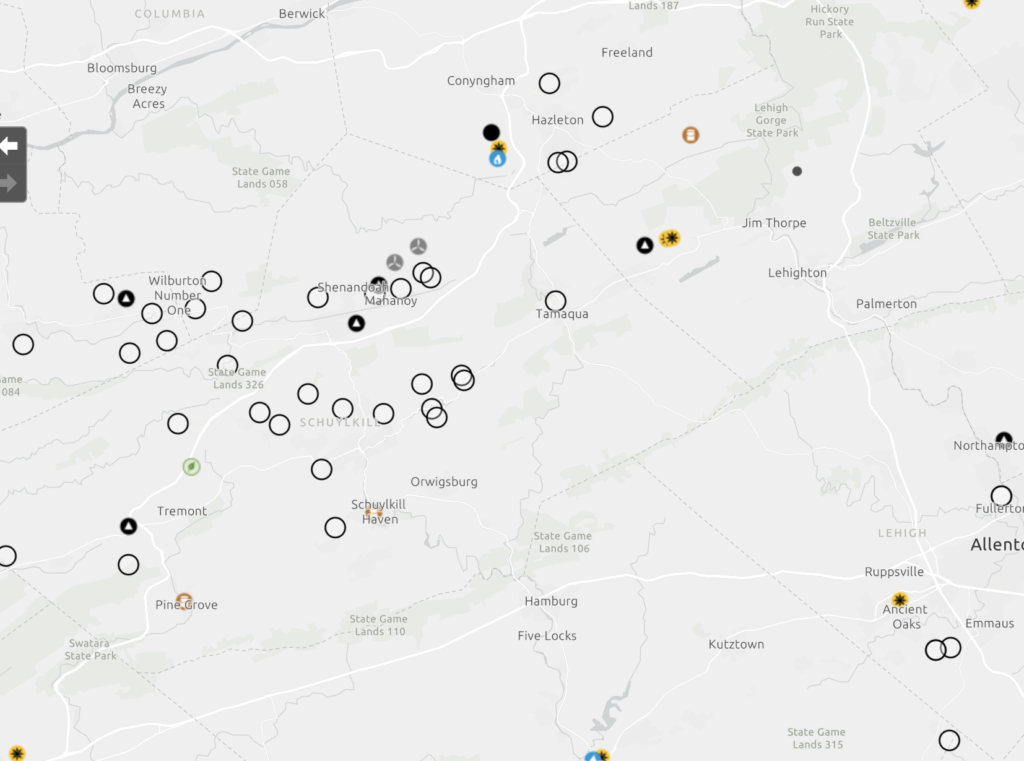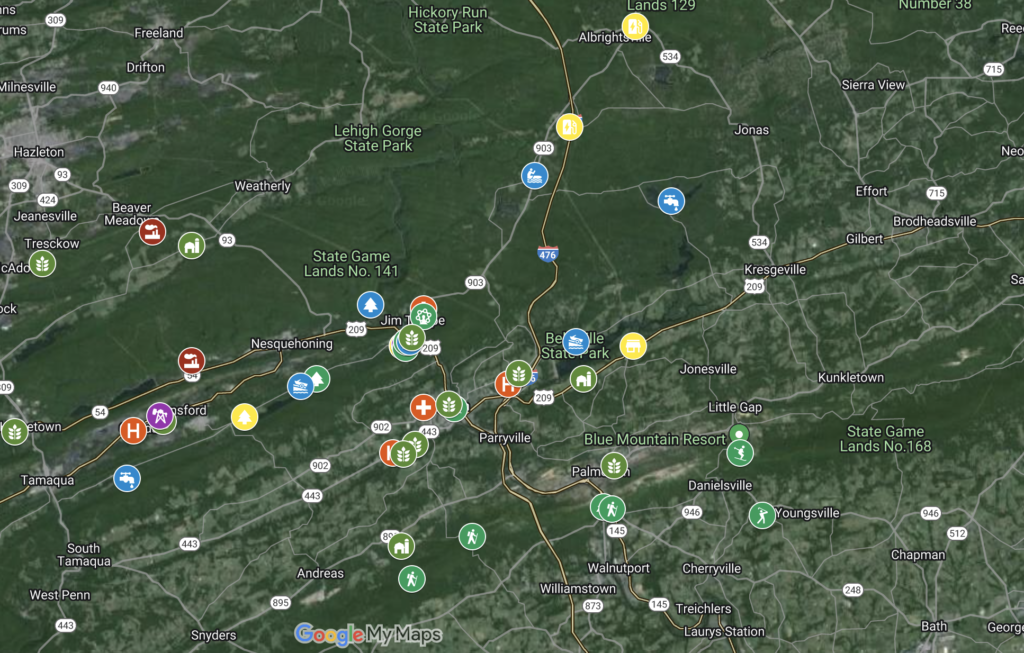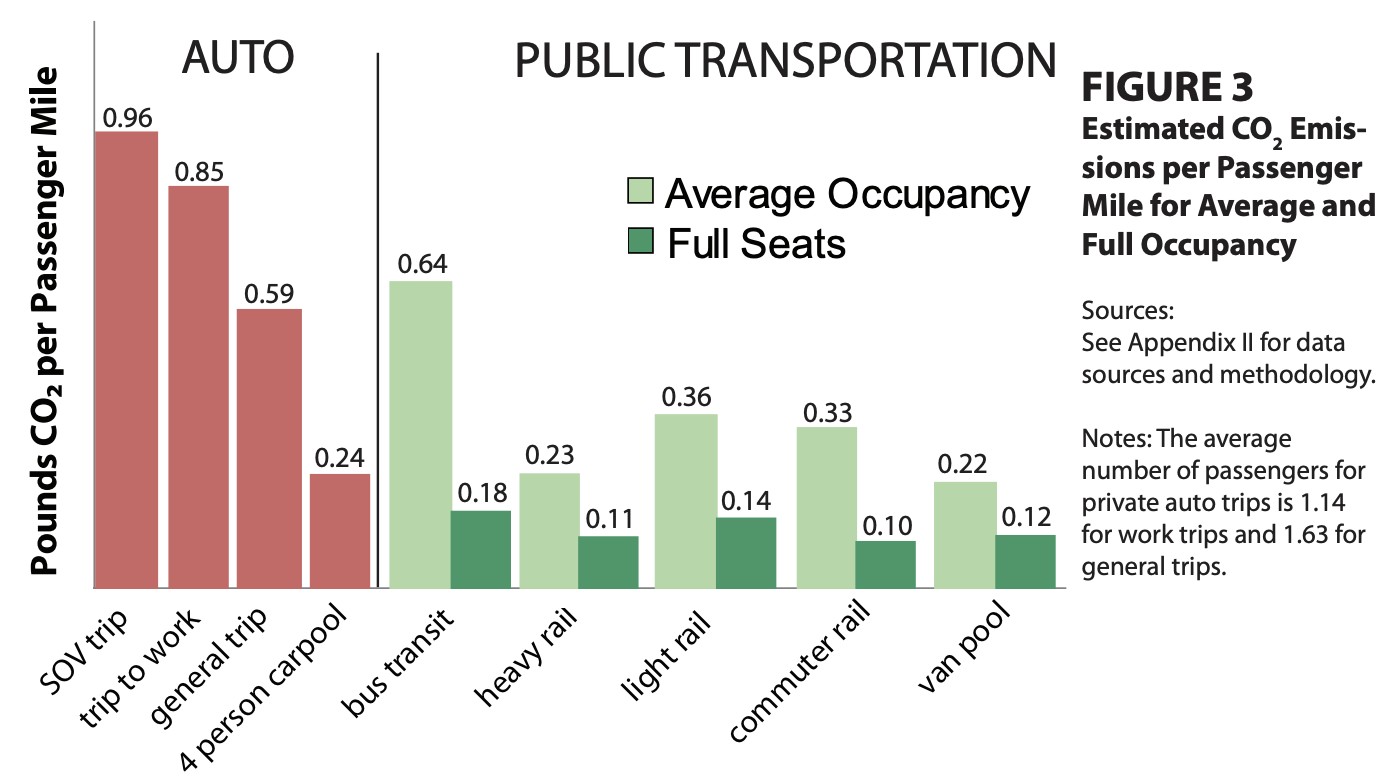Carbon County, Pennsylvania experiences the struggles and opportunities facing rural America’s shift toward sustainability. The area’s reliance on automobiles stems from underdeveloped public transportation, with limited local services provided by the Carbon County Transit (CCCT) which connects to Allentown via LANTA, further hindered by inadequate cycling infrastructure and bike storage facilities1. Energy production is primarily driven by traditional sources of coal mines and power plants, with the presence of few renewable energy plants as shown by the US Energy Information Administration interactive map1. This energy and transportation model involves broader socioeconomic challenges, including accessibility, affordability, and public health, which complicate the transition to sustainable practices.
The low population density and dependence on cars lead to environmental harm and highlight economic and logistical difficulties to improve public transit and bike infrastructure in rural areas. The lack of comprehensive emission tracking exacerbates difficulty in addressing air quality and public health concerns effectively. Moving away from fossil fuels poses economic and social challenges, particularly for communities dependent on these sectors, with inadequate public transportation exacerbating social inequities. Carbon County’s sustainability hurdles require a comprehensive, community-informed approach that embraces technology, innovation, and stakeholder engagement. Addressing the intertwined environmental, economic, and social issues is essential for the county, and rural America’s sustainable future, highlighting the need for innovative, inclusive solutions to foster environmental health, economic diversification, and equitable access to transportation and energy.

Sustainability challenges in Carbon County require focus on energy transition and transportation improvements, requiring diverse stakeholder involvement for success. Residents, directly affected by these initiatives, need to be engaged through forums, surveys, and education to align their interests and participation. Key government players include PENNDOT for transportation, US EPA and PA DEP for environmental regulation, and local officials such as county commissioners for policy and incentives, all crucial for providing support and regulatory frameworks. Educational institutions can lead in sustainability education and green practices, while businesses, as major energy users, can partner in sustainable ventures and adopt greener operations. Investors are vital for funding renewable energy and infrastructure projects, with their engagement depending on demonstrating the initiatives’ economic benefits. NGOs play a role in advocacy, expertise sharing, and community mobilization towards sustainable practices.
In Carbon County, achieving sustainability requires a collaborative and inclusive approach, understanding the complex web of stakeholder interests. Addressing air quality and energy challenges necessitates a multifaceted approach, integrating policy, technology, and community engagement. Key sustainable solutions include the adoption of renewable energy sources like the Bear Creek Wind Farm, which harnesses the region’s wind resources to generate clean electricity, and solar panel installations by local businesses and households2. Bright Eye Solar also installs panels to Carbon County residents3. These initiatives not only reduce reliance on fossil fuels and greenhouse gas emissions but also demonstrate renewable energy’s economic viability and scalability. Encouraging the expansion of such projects through incentives, streamlined processes, and education is essential for Carbon County’s sustainable energy transition, offering lessons and models for overcoming logistical and regulatory obstacles, and making a significant step towards environmental sustainability, social equity, and economic resilience.

To reduce the county’s dependence on cars and improve air quality, a multimodal transportation system is crucial4. This includes expanding public transit, such as CCCT to offer frequent service, longer routes, and bike storage. Promoting cycling through dedicated lanes can reduce road congestion, and enhance air quality and public health4. Green spaces and city designs that prioritize walking and cycling can make communities more livable and eco-friendly4. The “15-minute city” concept encourages accessing services within a short walk or bike ride, reducing commute times and enhancing community bonds4. Education, community engagement, and activism are key to promoting sustainable practices, with schools and organizations leading awareness and educational efforts.
The solutions above encompass renewable energy projects, accessible public transportation, and community engagement, presenting a path towards addressing Carbon County’s air quality and energy matter. These initiatives contribute to environmental and public health, along with economic benefits through job creation and energy savings. The success of these solutions in the county can serve as a blueprint for other rural areas facing similar challenges, showing the potential of integrated approaches to sustainability. Implementing sustainable initiatives in areas like Carbon County face obstacles such as renewable energy project opposition due to wind and solar aesthetic and environmental concerns. Wind turbines can disrupt wildlife and landscapes, while solar farms may compete with agricultural land4.
Transitioning to sustainable energy and transportation necessitates significant investment, which is difficult to secure in rural regions due to urban favoring of government subsidies. Fossil fuel industry resistance for economic concerns requires solutions to develop innovative financial models that appeal to investors through public-private partnerships, and provide equitable access to address these challenges, renewable energy and sustainable transportation. The main challenge is making these options available to everyone, regardless of physical location, ability, or financial situation, and ensuring that clean resources are shared equitably. Inclusive policy and planning focusing on social equity and accessibility are essential to handle these issues.
Moving towards sustainability in Carbon County faces aesthetic, economic, technical, and social obstacles, and offers a chance for innovation and community. Addressing these barriers requires engaging stakeholders, sustainable planning and innovative solutions. Overcoming these challenges would allow Carbon County to model sustainable development in rural communities that meets environmental, social, and economic objectives. Sustainability efforts aim to reduce environmental impact, such as cutting greenhouse gas emissions and improving air quality. Carbon County has key assets to transition from fossil fuels like the Bear Creek Wind Farm and Bright Eye solar installations, to CCCT and outdoor recreation. More assets are highlighted in the map. Measuring emissions, enhanced air quality, and shares of renewable energy display the success of these efforts.

Promoting public and non-motorized transportation can also lower vehicle emissions, showing success through more green infrastructure, less vehicle miles traveled per capita, and higher public and non-motorized transportation use6. Places like Carbon County need to promote social cohesion and fair resource access to achieve sustainability. The effectiveness of these efforts can be measured by community satisfaction, involvement, and consideration of marginalized communities’ needs. Additionally, educational programs on sustainability can foster unity by bringing together community around common goals.

Carbon County sustainability initiatives should boost the local economy by enhancing resilience, diversification, and sustainable development. Evaluation of economic impacts include job creation, local investments, and benefits from reduced energy cost or transportation for sustainability efforts. Attracting business, activating innovation, and promoting economic growth further their value. Effective sustainable solutions in Carbon County rely on addressing environmental, social and economic concerns comprehensively. Strategies include renewable energy, multimodal transit, and use of collaboration, innovative solutions, and community engagement to overcome barriers. Assessment of impacts holistically ensures sustainability measures reduce environmental damage while promoting social fairness and economic growth. Sustainable development in Carbon County serves as a model for rural areas, and displays the broad need for commitment to improving residents’ lives.
Bibliography
1“U.S. Energy Information Administration.” n.d. U.S. Energy Information Administration – EIA – Independent Statistics and Analysis. Accessed April 10, 2024. https://www.eia.gov/STATE/?sid=PA.
2“Project Gallery.” n.d. West Penn Power Sustainable Energy Fund. Accessed April 10, 2024. https://www.wppsef.org/project/renewable-energy-technologies/bear-creek-wind-farm.
3n.d. Accessed April 10, 2024. https://brighteyesolar.com/solar-panels-pennsylvania/carbon-county/.
4Niesenbaum, Richard A. Sustainable Solutions : Problem Solving for Current and Future Generations. New York: Oxford University Press, 2020.
5n.d. Accessed April 11, 2024. https://www.communityenergyinc.com/bearcreek
6Hodges, Tina. “Public Transportation’s Role in Reducing Greenhouse Gas Emissions (January 2010).” Federal Transit Administration, 2010, https://www.transit.dot.gov/sites/fta.dot.gov/files/docs/PublicTransportationsRoleInRespondingToClimateChange2010.pdf. Accessed 22 April 2024.